WordPress dashboard is a huge topic. We have divided the tutorial in a three part series on Introduction to WordPress dashboard. This is the first part.
WordPress dashboard is the interface where administrators or other users manage website page, posts and perform other tasks.
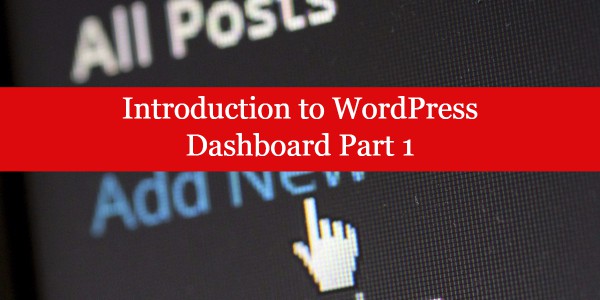
WordPress dashboard is the interface that appears when you login to your WordPress website by appending wp-admin to the URL of your website. Hence if your website is https://www.example.com/ The WordPress dashboard login URL for this website would be https://www.example.com/wp-admin/
The dashboard contains various settings which help you setup your website efficiently and modify several aspects of your site without needing to FTP to your site or touch the WordPress database.
Where is my WordPress dashboard login URL and user credentials?
The login URL and credentials are sent to your email as soon as you are done installing WordPress. The dashboard looks just like the screenshot below.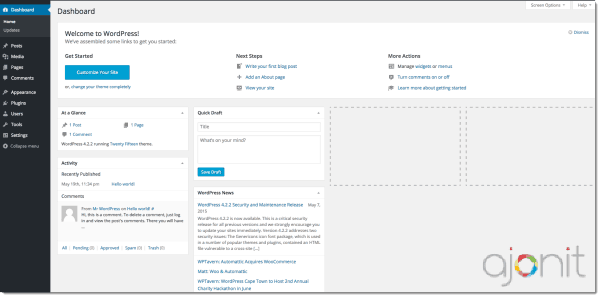
As can be seen, the left side has a black sidebar which is the main navigation menu. The rest of the portion of dashboard contains sections like WordPress News where you can get all latest WordPress related news, Activity which will display your activity like recently published posts, pages and comments. You can see At a Glance where you can see the total number of posts, pages, comments on your website and the current theme running on your WordPress front-end. Quick Draft where you can post something as a draft quickly. At the top you can see the Welcome message with information like Next steps and Actions. On that Welcome section, you can see a big blue Customize your site button which,, when clicked, takes you to the page where you can customize your site as per your needs.
The beauty of the dashboard is that you can add/remove any of the sections mentioned above by a check/uncheck of the relevant boxes.

Top Horizontal Menu
Moving to top horizontal menu you can find various option at both right and left corners. On the right side you can get information related to current logged-in user like name of the user, photo of the user, profile editing option and logout link. On the left side, you will get option like links to WordPress documentation, support and feedback, link to visit your site front-end, update available (if any) for theme, menu and WordPress, comments awaiting moderation and options to add new post, page, media and user.
Left Sidebar Navigation
Dashboard Section
This is the black bar that you see on the left hand side. Go to Updates link available under the Dashboard section. This page will show all the WordPress updates related things. On this page you can view available updates related to core WordPress, plugins and themes installed on your site.
Tip: It is always a good idea to regularly check and apply available updates as soon as possible. 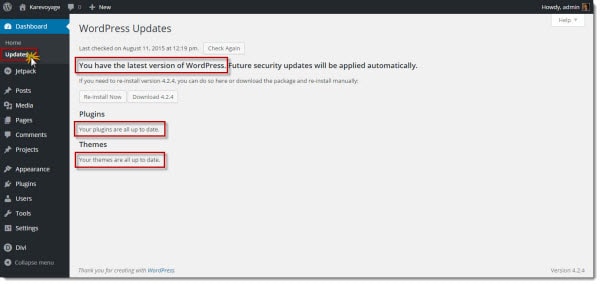
Posts section
This is the section where you can add new blog posts, categories and tags for your website. A Hello World post is created by default during WordPress installation. You can delete that post. You can click on Add New to create a new blog post. There are various settings available in the post editor right side and the bottom of the post which we will discuss in the future tutorials.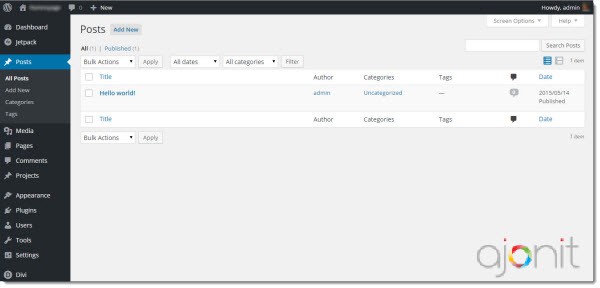
Other than posts, you can also add categories and tags.
Under Categories section you can create a new category which can be assigned to your posts and can help categorize your blog posts. To create a category, just enter Name of the category, Slug of the category, Parent (if needed) and Description. Click on Add New Category button to add a new category. While in the individual posts you can assign category to posts.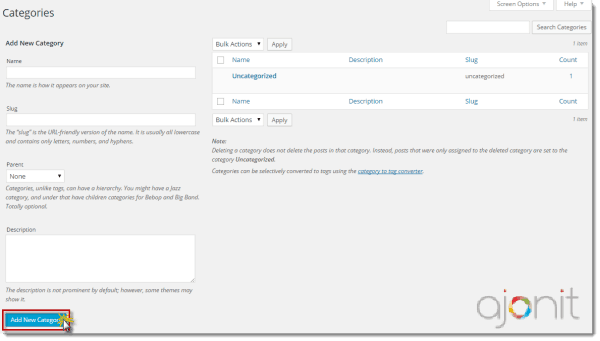
Under Tags section, you can create tags which can be assigned to your posts.
Categories vs Tags: The easiest way to understand the difference between category and tag is to imagine your website is a book. Table of contents found in a book defined the broad sections available in a book. Category in a WordPress website can be thought of as a table of content in a book. Similarly, index found at the back of the book can be thought of as tags in a website. As a good practice, try to assign one blog post to not more than 3 categories. You can be bit leberal with tags. A blog post can be assigned to as many meaningful tags as you wish to.
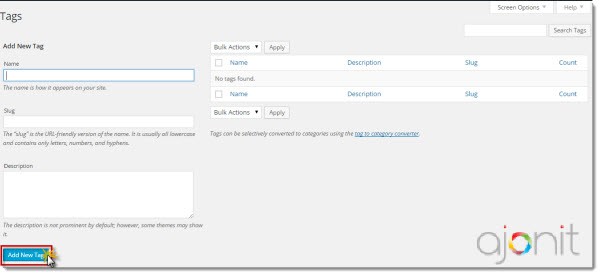
Media Section
Media is used to store files attached to posts and pages. Here you can find all media files like images, audio, video, zip, pdf and other files at one place. There are two ways to upload media files on your website, either use this section to upload media file first and attach to your pages and posts OR you can upload files during creation of posts or pages itself. (Hint: We prefer the second method) To upload your media files from this section hit Add New option and it will provide you option to Drop files here or upload the files using Select Files button. 
Pages Section
This section contains all the pages available in your website. There is a default page already available in fresh WordPress installation. You can choose to delete that page and create new pages of your choice. The process is same as creating post. The difference between post and page is, post is generally used for blogs and are published at regular intervals while page is used for static articles. Some examples of pages are homepage, contact page, about page, terms and condition page, privacy policy page etc. These pages need only one time work and after that they stay there until they need modification.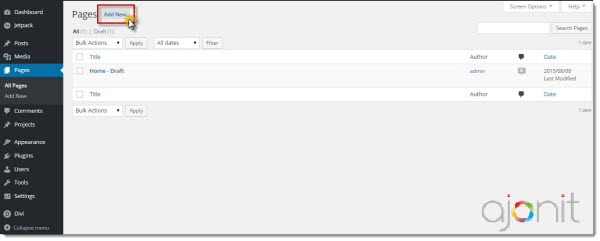
Comments Section
Under this section, you will find all comments that are made by site visitors on your blog posts. In this section you can approve or disapprove the comment or put in spam if comment is irrelevant. You can also choose to delete irrelevant comments. While this section consist of comments made on all posts/pages of your website, you can also go to individual posts/pages to find the comments related to those particular posts/pages.

This brings us to the end of Part 1, we will follow up this tutorial with Part 2 on introduction to WordPress dashboard.
